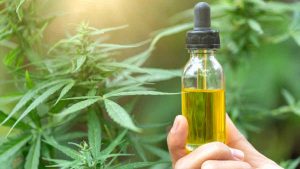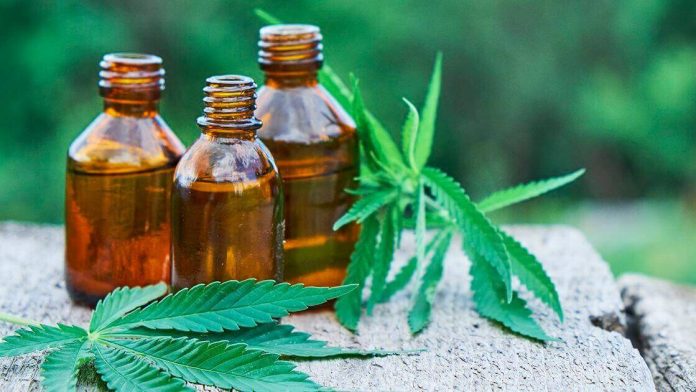Contents
Health Benefits of CBD:
Historically, cannabis or Cannabis sativa, also known as hemp or marijuana, is the plant that has been used the most for 6,000 years for medicinal, spiritual and recreational reasons. This plant contains Cannabidiol (CBD), being the second most abundant cannabinoid compound. in C. sativa , it not only has medical benefits, but despite being a narcotic substance it is not psychoactive. Some of the health benefits of CBD are as analgesic, anti-inflammatory, treatment of depressive disorders, anti-aging, antioxidant, antipsychotic, antiepileptic. They even help improve the health of our pets.
Cannabis sativa:
C. sativa is an annual plant species, belonging to the Cannabaceae family, which can be used almost entirely, since we can obtain textile fibers, fuel and nutrients, and it is also used for the health benefits it offers us. The plant has gone from harvesting to cultivation and we even wonder if this was the first example of domestication.
As time passed, the exploitation of the plant through cultivation was perfected, in China, the first Chinese botanists, described the presence of male and female plants in this species. The introduction of cannabis in America was due to the Spanish, Portuguese, English and French; and with the passage of time Central America had a greater profusion. Although C. sativa has been cultivated and used for a long time, in recent years there has been great interest in its medicinal uses (Angeles López et al., 2014).

Benefits of CBD
This plant species grows in temperate and subtropical regions of the world, the germination of the seeds begins in spring, its growth stage is during mid-summer until they flower and its harvest is during early autumn. C. sativa contains cannabinoids, terpenes, flavonoids, alkaloids, lignanamides, among others; the first, the cannabinoids, are the most abundant compound and that is exclusive to this species.
Hemp is synthesized and accumulated as cannabinoid acid, and only during drying and storage is the acid gradually decarboxylated to its final form, such as Δ9-tetrahydrocannabinol (THC) or CBD (Angeles López et al., 2014 ). Other types of cannabinoids that C. sativa contains are: cannabigerol (CBG), cannabichromene (CBC), cannabidiol (CBND), cannabielsoin (CBE), cannabicyclol (CBL), cannabinol (CBN), cannabidiol (CBT).
How does CBD work?
Cytochrome P450 (CYP-450) is a family of homo proteins (which are made up only of amino acids) whose function is to metabolize xenobiotics, that is, they are enzymes responsible for transforming foreign substances to our body until they are eliminated, these substances can be: drugs, pesticides, steroids and alkaloids; as well as metabolizes other substances that are produced by our body (Jaimes-Santoyo et al., 2014).
CBD in particular is metabolized in the liver by CYP2C19 AND CYP3A. CYP activity to metabolize xenobiotics is determined by factors such as sex, diet, physical activity, age, hormonal status, and drug treatment . Type 1 and 2 cannabinoid receptors (CB1 and CB2) make up the endocannabinoid system, as well as transport proteins and enzymes that produce and degrade endocannabinoids.
This system is involved in the regulation of many bodily functions, including metabolism, eating behavior, mood, anxiety, pain perception, and regulation . CB1 receptors are more prevalent throughout the body, with a particular predisposition to receptor regions in the central nervous system and spinal cord, while CB2 receptors are more prominent in lymphatic and immune tissues (Boyaji et al., 2020 ).
What is the endocannabinoid system?
The endocannabinoid system includes cannabinoid and endocannabinoid receptors that interact in the same way as a key and lock. Cannabinoid receptors are cell membrane proteins that act as an endocannabinoid blockade, endogenous lipid ligands are created by different body cells, which act as perfect key binding receptors.
This activation creates modifications in the cell that leads to the final action of the endocannabinoid system on the physiological processes of the body. The endocannabinoid systems are related to many physiological processes (for example, the preparation of neurotransmitters, regulating pain in pain and cardiovascular, digestive and hepatic function) that we will explain in more detail in this article (Fundación CANNA, 2020).
The two main receptors that make up the endocannabinoid system are the CB-1 and CB-2 cannabinoid receptors. It was also recently recognized that the GPR55 receptor could be considered as a third receptor with cannabinoid activity . All these receptors are transmembrane proteins capable of transmitting extracellular signals to the interior of the cell (Fundación CANNA, 2020).
The CB-1 receptor is the most abundant metabolic receptor in the brain and its wide distribution in humans has been characterized . CB-1 receptors are expressed primarily in the hippocampus, basal ganglia, cerebral cortex, and cerebellum.
CB-1 receptors are also expressed in many peripheral organs; therefore, they are found in fat cells, liver, lung, smooth muscle, gastrointestinal tract, pancreatic beta cells, reproductive organs, immune system, peripheral sensory nerves, and sympathetic nerves. This receptor is closely related to memory, learning and the anticonvulsant effect; They are also related to the psychoactive effects of C. sativa, which is why it has a great affinity with THC (Kratz & Garcia de Palau, 2018).
The CB2 receptor is found in structures belonging to the immune system such as B and T lymphocytes, monocytes, macrophages, mast cells, granulocytes, glial cells (maintains the self-regulation of cell communication) and the spleen (responsible for initiating the immune response, store nutrients and filter the blood). Only a small proportion is present in cells belonging to other tissues and organs such as the heart, liver and pancreas. Unlike CB1 receptors, CB2 receptors are not related to the psychoactive effects of cannabis, but rather are responsible for immunomodulatory properties, that is, they can stimulate or decrease the immune response; therefore, it has a greater affinity with cannabidiol (Kratz & Garcia de Palau, 2018).
Why is CBD safer than THC?
THC is the main psychoactive component of the plant, psychoactive substances affect mental activity by altering perception. Clinically it is useful for relieving moderate pain due to its analgesic effects as well as protecting the nervous system from neurodegenerative processes . Δ-9-tetrahydrocannabinol mimics the action of anandamide, a natural neurotransmitter in the body.
Several studies have suggested the possible beneficial effects of THC in Alzheimer’s disease, suggesting that THC can reduce the activity of acetylcholinesterase (an enzyme that degrades acetylcholine, a neurotransmitter responsible for communication between cells), improve cholinergic conversion (path capable of producing, releasing or altering the neurotransmitter acetylcholine) and preventing the progression of the disease. showed that cannabis smokers with a high CBD/THC ratio were less likely to develop symptoms of schizophrenia.
This fact was confirmed by psychometric tests, in which the participants lost the intensity of the psychotic effects when THC was administered together with CBD, the latter improving the properties of TCH (Soria, 2018).
Health benefits of CBD:
Sleep improvement . CBD can regulate sleep cycles, resulting in deeper, more relaxed sleep. In a human study, individuals given CBD were found to sleep longer than those given the placebo (Mechoulam et al., 2007). What CBD does is inhibit the enzyme fatty acid amide hydrolase (FAAH), this protein has the function of degrading anandamide, an endogenous cannabinoid involved in sleep modulation (Suraev et al., 2020).
Reduces oxidative stress . CBD has been found to be a powerful antioxidant, as it reduces oxidative damage induced by hydroperoxide (H2O2), so it could play an important role in the treatment of oxidative neurological diseases, reducing damage at the molecular level by protecting protein structures. It prevents radical reactions, captures or transforms free radicals into less active forms (Mechoulam et al., 2007).
Analgesic and anti-inflammatory . Due to the fact that CBD is a modulator of the CB2 receptor, it has been found that it has the property of reducing pain and inflammation, since, if we remember, the CB2 receptor is found in structures of the immune system, which is why they regulate the processes of the pain and inflammation. CBD has been used to treat chronic pain, where it has been shown to contribute to the reduction of pain presented, for example, during advanced stages of cancer (Boyaji et al., 2020).
Neuroprotective . The neuroprotective property of CBD is attributed to the fact that it increases cerebral blood flow through the 5-HT1A serotonin receptor, its activation has been related to the mechanism of action of antidepressant and anxiolytic medications. In addition, it is also related to its antioxidant capacity, since the development of neurodegenerative diseases has been proven that one of the factors is oxidative stress (Mechoulam et al., 2007).
Skin care . Our skin also has the endocannabinoid system, so the CB1 and CB2 receptors bind with endogenous anandamide to carry out skin care, however, if you need an increase in the amounts of anandamide, it is not easy to be achieved. This is why the use of CBD helps us to maintain homeostasis, the formation of a protective barrier and the regeneration of the skin. If the cutaneous cannabinoid system is altered, it has been involved in skin conditions such as: acne, pigmentation disorders, psoriasis (non-infectious scaly rash), scleroderma (chronic stretching and hardening of the skin), etc. (Sivak, 2020).
Conclusion:
The use of cannabinoid compounds has been controversial since there was a decrease in their use, and in the study of their medicinal properties, with the appearance of drugs and stronger harmful substances. However, in recent years the studies carried out to learn more about these compounds, particularly CBD, have been on the rise and only some of their medicinal properties have been proven, and many more are still under study. The use of CBD is safe as long as it is administered under the supervision of a health professional, in this way we will take full advantage of its multiple health benefits.









